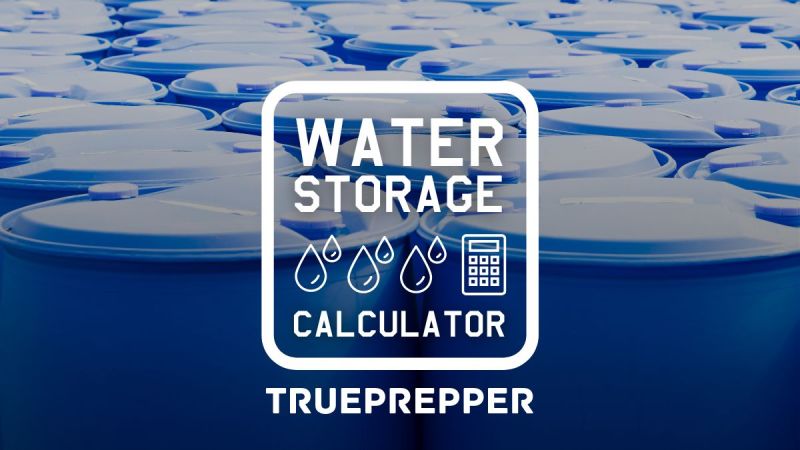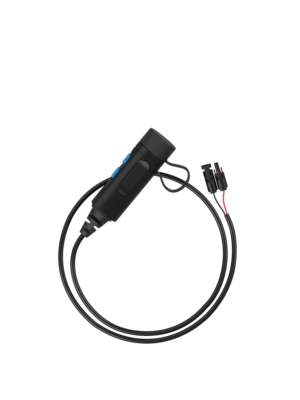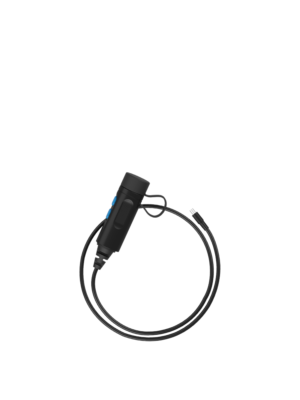The Survival Rule of 3 | Air, Shelter, Water, & Food
The survival rule of 3 can help you prioritize your survival needs. It covers the basic survival requirements of air, shelter, water, and food. Commit this very basic rule to memory, and you’ll be able to make quick decisions about survival tasks on the fly.
Besides the rule itself, we also go over each section of the rule looking at accuracy and just what that part of the rule means for survival. There are also a few additions that have been added to the rule, and we examine those for merit.
Contents (Jump to a section)
The Survival Rule of 3
The Survival Rule of 3, or “rule of threes”, is a well-known rule of thumb that describes the basic survival rules using the number three.
The rule says that you can survive:
- 3 minutes without air
- 3 hours without shelter
- 3 days without water
- 3 weeks without food
The order of these determines what you should prioritize in a survival situation. First, you need to be able to breathe. Next, you need to have a way to shelter yourself from the elements. Then you will need to acquire a source of water. Finally, you will need to forage or hunt for food.
Each rule assumes that you are meeting the requirement above it. For example; you can’t survive 3 weeks without food unless you have water. You can’t survive 3 hours without shelter unless you have air, etc.
The survival rule of 3 may seem simplistic, but it can help you make split-second decisions in a survival situation. Mulling over whether to gather food or build a makeshift shelter can waste valuable time. The rule is simplistic so it can be easy to remember, but still helpful.
The rule is not exact. Many people can hold their breath for longer than three minutes. The shelter rule has a lot of variances based on your environmental conditions. We’ll go over each rule’s accuracy in the specific sections below.
Limits to the Survival Rule of 3
Because the survival rule of three isn’t exact, the actual time for each area it covers differs. You can come in below or above the 3 depending on the situation, so don’t go setting any timers.
Some of the exceptions have been proven to go much longer:
- A German diver held his breath for 22 minutes and 22 seconds
- Shelter requirements depend on the weather and the environment
- An Austrian man survived for 18 days without
water - A hunger strike participant lasted 74 days
without food, verified by a doctor
These anecdotes blow up the idea that the survival rule of three is consistent for everyone in any situation. To get a better understanding, we’ll need to turn to another source: the medical community.
How Long Can You Survive Without Air?
According to the Survival Rule of Threes?
3 days
According to science?
5 minutes
You can’t make it very long without air. Oxygen is the key ingredient that we inhale, circulate through our bloodstream, and is used to power our cells.
Because it is so important to our function and survival, it is important when you learn first aid. One of the first things you learn in CPR is the ABC priorities:
- Airway – Check to see if anything is blocking air from getting into the lungs, like the tongue or a foreign object.
- Breathing – Check for signs of breathing: look for chest rising, listen for breathing noises, and feel for breath movement.
- Circulation – Check for a pulse.
Air is involved in all of these- it sustains your life and any permanent interruption spells certain death.
Three minutes may not seem like a long time, but it is a general guideline. The world record for holding is a whopping 24 minutes and 3 seconds- much longer than 3 minutes! This was accomplished by Aleix Segura Vendrell, a professional free diver from Spain. Holding your breath underwater works a little differently than on land, though. Humans have a little-known reflex that makes it easier to hold their breath underwater- a reflex that helps us avoid drowning.
Drowning isn’t the only way you can die without air. Any situation that cuts off your breathing can pose a risk of immediate death- even if it seems harmless. One of the most common examples: Choking on food kills thousands of people every year. It is the fourth leading cause of unintentional injury death.
Choking is a very direct way to test how long you can survive without air. It catches you unprepared (and not underwater). Four to six minutes is about how long you have, according to medical experts. Irreversible brain death will occur within 10 minutes if you are unable to breathe or receive medical assistance.
Being prepared with CPR knowledge and knowing how to do the Heimlich maneuver is very important, according to the survival rule of 3.
Besides fluke accidents, like choking or drowning- there are several survivalist scenarios that can attack your airways. CBRN (Chemical, Biological, Radiological, and Nuclear) attacks and accidents can cause fatal damage through inhalation. N95 masks at the very least can protect you in the face of pandemics. A full-faced respirator (gas mask) with a purified air attachment (PAPR) would be the best bet for the others.
Even still, some disasters- like fire- require that you leave the area. A gas mask will not protect you from smoke inhalation. Full-service SCBA equipment is used by firefighters in these situations, and that is not practical for the public to keep it on hand.
How Long Can You Survive Without Shelter?
According to the Survival Rule of Threes?
3 hours
According to science?
Varies widely
Shelter from the elements doesn’t have to be a literal bushcraft shelter. This category covers everything that stands between you and the elements, which can include:
- Tarps
- Makeshift shelters
- Bivvys
- Sleeping Bags
- Tents
- Your home
- Umbrellas
- Campfires
- Clothes
- Shoes
Exposure is the leading cause of death in the wilderness. Extreme heat and cold can be brutal on the human body, which is why we have adopted such a wide range of tools and shelters to protect ourselves.
You may not initially think of an umbrella or campfire as a type of ‘shelter’, but they definitely can protect you from the elements and, in the case of a fire, can save your life.
Similarly, clothes are a barrier between your body and the elements. On the popular survival series, Naked and Afraid, contestants have to strip down for the survival challenge. This doesn’t just add awkward drama that makes for good TV- it also makes it more difficult to survive. Contestants have to figure out how to keep a fire going, huddle for warmth, and even ward off insects. This added curveball is one reason why it ranked so high on our top survival TV show list.
You may need to get creative yourself if you need shelter in a survival situation and have no equipment. Bushcraft is one of the leading wilderness survival hobbies, and it covers building shelters in the wild. One of the best YouTube channels demonstrating this is Primitive Technology, which takes it one step further by using only primitive tools for bushcraft:
How Long Can You Survive Without Water?
According to the Survival Rule of Threes?
3 days
According to science?
4 days
Thirst is uncomfortable. Dehydration is painful. And beyond that? Fatal.
Going without water can quickly become a life-threatening problem. This makes sense because our bodies are mostly water. Most people know that we are made up of about 60% water, but this varies quite a bit by organ:
- Brain = 73% water
- Lungs = 83% water
- Muscles = 79% water
- Skin = 64% water
- Bones = 31% water
Babies are especially watery- being over 78% water. Women are about 5% less water than men, on average as well! So what happens when we cut off this elixir of life? Bad stuff happens.
The body’s thirst mechanism lags behind dehydration- so by the time you are thirsty, your body is already feeling some effects. Slight dehydration affects your mood, memory, attention span, and coordination. Then your kidneys start to retain water, reducing your urge to urinate. From this point forward, your blood starts to thicken with less water, and your cardiovascular system can become stressed: lightheadedness and even fainting will occur. Quickly after this, organs can begin shutting down.
Your level of activity and the environment around you can greatly affect how long you can go without water. Extreme temperatures can make your body require more water- especially if you are active.
There is a wide range of guidance on how much water you need each day to survive, but the most sponsored guidance from doctors and scientists is about half a gallon each day (2 Liters). They say this should be stretched out in 8 servings of 8-ounce cups (8×8) so that you have a steady supply of water throughout the day.
Scientists have also said that the average time a human can last without water is closer to 100 hours (a little over 4 days), as opposed to 3 days. This is assuming room temperature in a lab setting. High heat will drastically cut this down below two days. Cold weather can extend this beyond 5 days.
Supply interruptions and utility shutoffs are a few of the ways large groups of people could start running short of water. With a water shortage, unique collection methods will come in handy, such as capturing and filtering your own water, rainwater collection, and distilling from the air.
All of these reasons explain why water containers and purification methods are important for survival kits. You can see exactly how much water you’ll need with our water storage calculator:
How Long Can You Survive Without Food?
According to the Survival Rule of Threes?
3 weeks
According to science?
14 days
Hunger can be brutal, but starvation is deadly. Although it is the last priority for the survival rule of 3, food is still important and on the list. Even though our bodies can tolerate long periods without food, it can be one of the more difficult things to find in an emergency or disaster situation.
Supply chain interruptions can sever food sources from their destination across any country. The modern world is powered by supermarkets that rely on these delicate supply chains, and variances in either demand or supply are quickly seen.
A food storage plan is very important for prepping and survival. There are many methods, from methodically stashing canned goods in your pantry to picking up new hobbies- like trapping.
Medical Opinions
Dr. Alan Lieberson has quite a lot to say on the subject of starvation and fasting. He states that total sustenance (food combined with hydration) is much easier to study and that they have much more effective data.
The grim example provided talks of people in a persistent
vegetative state (PVS), and how long they last after the feeding tube is turned
off. Almost all patients die between 10 and 14 days. This, however, is an
example of how severe dehydration is the survival-limiting factor and not
necessarily the lack of food.
Besides incapacitated patients with feeding tubes, doctors
also encounter starvation in patients with anorexia nervosa, malignant tumors,
or participating in ‘starvation diets’. In these patients, doctors see organ
failure and myocardial infarctions commonly. Even still, patients admitted and
exhibiting starvation symptoms typically do not last beyond 14 days from their
last meal.
Trial and Error
The University of Minnesota gave us a better look at how food impacts our survivability with an experiment conducted in 1945. It was named the Minnesota Starvation Experiment, and it surprisingly had over 200 volunteers. They selected 36 males to participate in the trials and they were tasked with losing 25% of their body weight. Most of these men were selected from the Civilian Public Service (CPS)- an alternative to military combat service for conscientious objectors.
It sounds crazy, but the University of Minnesota was not
just putting on a spectacle- they were conducting this research to assist in
the war effort. The test helped researchers and scientists understand what the
body goes through during starvation.
The results were published in a two-book set “The Biology of Human Starvation”, which is still considered a landmark reference on human starvation. The research leaders, Dr. Keys and Dr. Brozek would go on to become recognized psychology historians and a proponent of the Mediterranean diet and popularizing the body mass index (BMI).
How Your Body Reacts
There is an enormous amount going on physiologically and psychologically when your body is deprived of food. A few of the important transformations include:
- At the six-hour mark, your body may run low on
glucose. A process called Ketosis will start to crop up in order to find
much-needed energy. Your body will start to break down fat to use as energy,
leaving behind acid buildup. This will lead to impaired cognitive function. - At the three-day mark, your brain gives the command to break down protein stored in your body to find further glucose reserves. This breakdown releases more acid: in the form of amino acids. The amino acid can be converted into glucose.
- Now that the brain is receiving elevated levels
of glucose from amino acids, cognitive function is restored but your muscle
mass begins to steadily deteriorate. - During this period, menstrual cycles will likely
stop for women and your bone density will begin to weaken. - After one week of not eating, your body’s immune system will no longer be supported leaving you at high risk of bacteria and viruses.
- At two weeks, your respiratory quotient (RQ)
will show that your body has adapted to starvation with minimal protein
oxidation with a 0.6 reading. This indicates that fat oxidation has been your
main source of glucose production. You are almost fully converted to running on
tissue reserves and food intake would need to be gradually reintroduced to
reverse this. - Each day brings you successively closer to
death, with no nutrients coming in and your body self-cannibalizing to produce
glucose energy until complete organ failure, starting with the kidneys.
Dr. Lieberson, from earlier, states that the “duration of survival without food is greatly influenced by factors such as body weight, genetic variation, other health considerations, and, most importantly, the presence or absence of dehydration.”
How Long Can a Fat Person Live Without Food?
The answer is a surprisingly long time.
One man went from 456 pounds down to 180 by not eating for 382 days, losing about 11 1/2 ounces per day.
This was an obesity treatment out of Scotland in 1971, but it was well documented and his conditions were monitored in a clinical setting. He was also provided nutrients intravenously to maintain critical vitamin and mineral levels.
Surroundings and Environment
Your surroundings and environment can impact how long you
can survive without food just as much as your own physiology.
Energy is what your body needs to survive, and any
environment that requires you to work harder or use more energy to survive will
shorten your survivability. In many disaster and emergency situations, your
caloric intake has to increase to match your increased activity. This makes it
much easier to start starving.
One of the harshest environments you could find yourself in is the desert. A desert is a barren area of land: without water and vegetation. You can still find food in a desert, but it is much harder than in any other area on earth. 33% of the world is covered in desert, and if you find yourself without food in a desert your survival timeline can be drastically shorter.
Fasting vs. Starving
Sometimes confused for each other, fasting and starving are
not the same.
Fasting is not
eating or drinking (except water) for a set period of time.
Starving is when you severely miss nutrients required to survive. If you fail to eat adequate amounts of protein, carbs, fats, vitamins, and minerals- you are also considered to be starving.
Both fasting and starvation can be voluntary or involuntary.
Protestors often resort to fasting as a non-violent protest tactic. You may be
required to fast before a medical procedure. Starvation happens in more severe
cases, and if fasting gets out of hand it can become starvation.
The main difference between fasting and starvation is the severity of the symptoms. Fasting may leave you with hunger, dizziness, lightheadedness, headaches, and general fatigue. However, starvation will lead to brain dysfunction, convulsions, and heart failure- just to name a few.
Fasting has been a popular diet technique for some time, and is sometimes called a ‘starvation diet’. This accounts for many of the cases that medical practitioners encounter for starvation. These diets can be dangerous and can lead to acute myocardial infarctions for those who take them too far.
Many types of animals are known to fast. Bears, penguins, and seals fast without both food and water for several months at a time. It is important to know that they do not starve during these periods. They have biochemical adaptations in how they metabolize proteins that allow them to survive.
Everyone’s body chemistry is different, but the steps that
follow your last meal as you approach and enter starvation are similar for
everyone.
What is the Longest Any Person Has Survived Without Food?
A 27-year-old man set the record for the longest fast at 382 days without food in 1971.
They called him Mr. A.B. in the study as they administered the obesity fasting treatment in Scotland. He was monitored closely by doctors and scientists and given supplements to keep his vital nutrients in balance.
His actual name is Angus Barbieri and he still holds the Guinness World Record for this achievement.
How Long Can You
Survive Without Food?
After reviewing survival rules of thumb, medical observations, statistical observations, and how other factors can affect survivability, experts agree that fourteen days is the best approximation for how long you can survive without food.
You can caveat this with the fact that there is a high degree of variance and an emphasis on how dehydration speeds up starvation drastically. It never hurts to stay hydrated, and most demonstrated starvation cases that go well beyond the two-week mark were people who were very well hydrated.
Variations of the Survival Rule of 3
The rule seemed a little too basic to some because a few have tacked on some extra variations/rules to ‘spice it up.’ I’m not partial to over-complicating a simple rule, but you can decide for yourself. A few extra ‘rule of threes’ include:
You can survive:
- 3 seconds before making a survival decision
- 3 minutes in icy water
- 3 months without companionship
- 3 months without hope (also have seen this as 3 seconds)
The bullet about hope is a throwback to the saying:
“Man can live 40 days without food, three days without water, eight minutes without air, but only one second without hope.”
This is less catchy and harder to remember than the survival rule of threes, and I’m not completely sold on the ‘hope’ part. Although I agree hope is important in a survival situation, it is less tangible than the other requirements for the human body.
These extra rules are less concrete and the whole thing gets further away from the original intent as you add more rules. I prefer the original, simple Survival Rule of 3- but feel free to chime in with any additions that you prefer in the comment section.
Sources and References
Baker, D., et al. (2013). The Psychology of Hunger. American Psychological Association. Volume 44. Issue 9. Page 56. (Source)
Castellini, M., et al. (1992). The Biochemistry of Natural Fasting at its Limits. Experientia. Volume 48. Pages 575–582. (Source)
Guinness World Records. (2016). Longest time breath held voluntarily (male). (Source)
Keys, A., et al. (1950). The Biology of Human Starvation. The University of Minnesota Press. Volume 1. (Source)
Lieberson, A. (2004). How Long Can a Person Survive Without Food? Scientific American. (Source)
Mundel, T. (2016). Here’s What Happens to Your Body When You’re Dehydrated. Science Alert. (Source)
National Safety Council. (2020). Choking Prevention and Rescue Tips. (Source)
Stewart, W., et al. (1973). Features of a successful therapeutic fast of 382 days’ duration. Postgraduate Medical Journal. Volume 49. Issue 569. Pages 203-209. (Source)
USGS. (2020). The Water in You: Water and the Human Body. (Source)
The Final Word
The survival rule of 3 is a great rule to lean on when you need to make a split-second decision during a disaster or emergency. It is also a good rule of thumb to plan around when developing prepping and survival kits. It gives us foundational survival values and sound risk management in an easy-to-remember ‘rule’.
After learning why you need to prepare for emergencies, we can help you with what. You can find our kit guides in the top menu for specific disaster kit recommendations, or you can start with our general survival kit which covers most of the bases at home.
Beyond these guides, we also test and recommend a wide variety of tried-and-true equipment for a wide range of budgets. This should help you on your way to preparedness and improve your survivability with all four sections of the survival rule of 3.
Keep exploring, stay prepared, and be safe.
You’ve Been Missing Out
Join the 2+ million preppers that rely on our prepping advice by subscribing to TruePrepper.
- Practical guides and tips
- Useful survival giveaways
- Free, forever
- < 0.4% of people unsubscribe
Thanks for subscribing, reading, and welcome to the club.

Please Support Our Sponsors
Solar Power Generator Discounts Along With Free Shipping
- 10% OFF for Jackery Solar Generator 2000 Pro Series with code "JADEAL"
- 10% OFF for Jackery SolarSaga 200W Solar Panel with code "JADEAL"
- 10% OFF for Jackery Solar Generator 1500 Series with code "JADEAL"
- 10% OFF for Jackery Solar Generator 1000 Series with code "JADEAL"
- 10% OFF for Jackery Explorer 1500 Portable Power Station with code "JADEAL"
- 10% OFF for Jackery Explorer 1000 Pro Portable Power Station with code "JADEAL"
- 10% OFF for Jackery Explorer 500 Pro Portable Power Station with code "JADEAL"
- 10% OFF for Jackery Explorer 300 Pro Portable Power Station with code "JADEAL"
- 10% OFF for Jackery SolarSaga 100W Solar Panel with code "JADEAL"

The University of Georgia is represented by the Georgia Bulldogs . The Bulldogs participate in the Southeastern Conference's (SEC) Eastern Division of the NCAA.
They play their home games in the storied Sanford Stadium in Athens, Georgia. The first season in Georgia was in 1892. In 1942, 1980, and 2021, the Georgia Bulldogs won three national championships.
The Georgia Bulldogs have additionally been crowned the National Champion in four additional seasons by at least one polling organization (1920, 1927, 1946 and 1968).
The Georgia Bulldogs are tied for second place in conference history with their 15 conference titles, including 13 SEC titles, and their 59 bowl appearances, which ranks second all-time.
In addition, the program has produced five top picks in the National Football League (NFL) draft, two Heisman Trophy winners, numerous winners of various national honors, and many others.

Longhorns football represents the University of Texas in Austin often known as Texas, UT or the Texas Longhorns. The Longhorns represent the Big 12 Conference in the NCAA Division. They play in Austin, Texas, at the Darrell K. Royal-Texas Memorial Stadium.
The Texas Longhorns are ranked third and seventh, respectively, in terms of all-time wins and win-loss records, with over 900 victories and an overall win-loss percentage of.705.
The legendary program also boasts four national titles, 32 conference titles, 100 First Team All-Americans, and two Heisman Trophy winners.
Get your Texas Longhorns Revival T-Shirt today. The Texas Longhorns Rustic Revival shirt is also a fan favorite.
Many college sports fans like to wear their gear all around town, get your Texas Longhorns Centered gear and show your support.





 Gettr
Gettr














